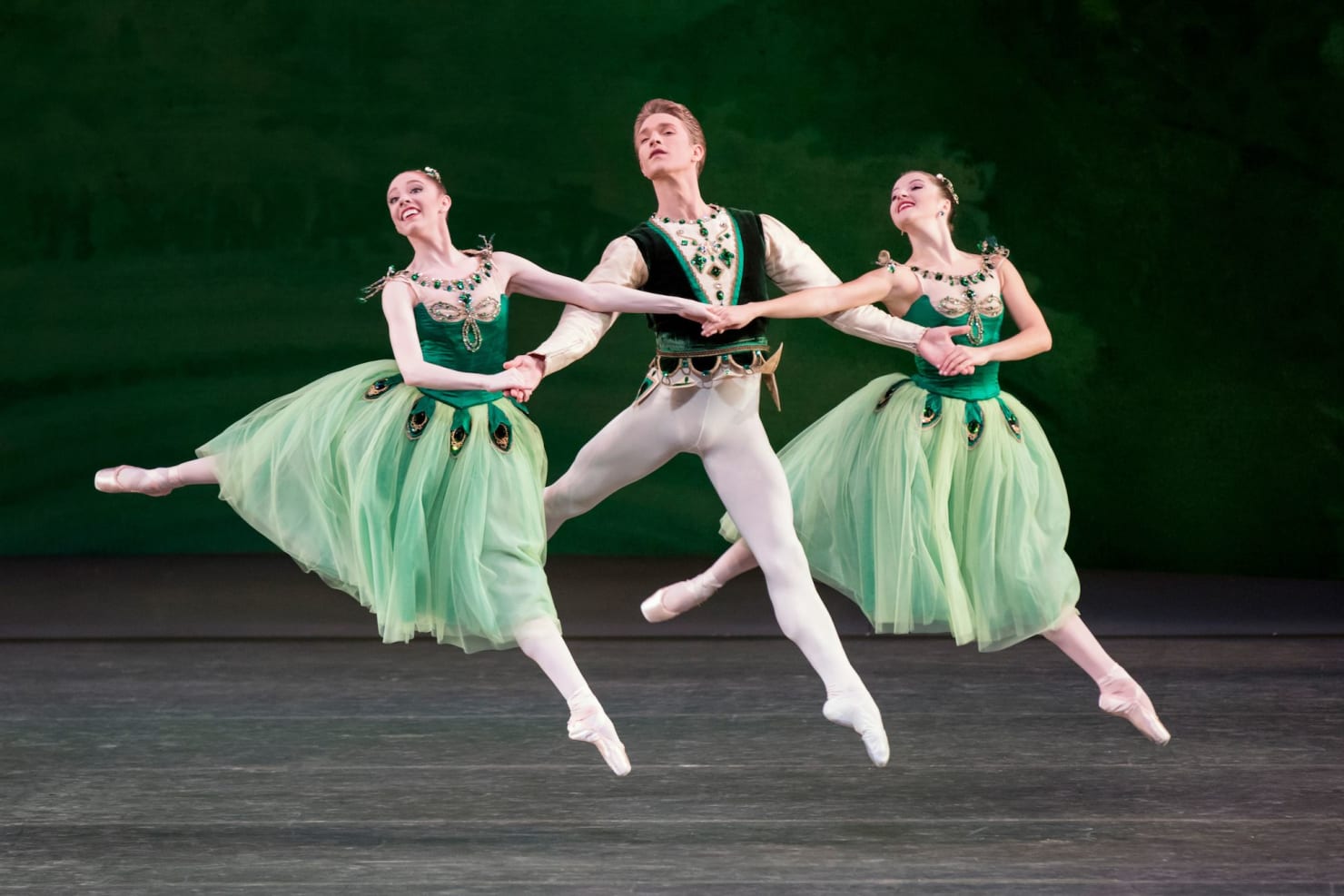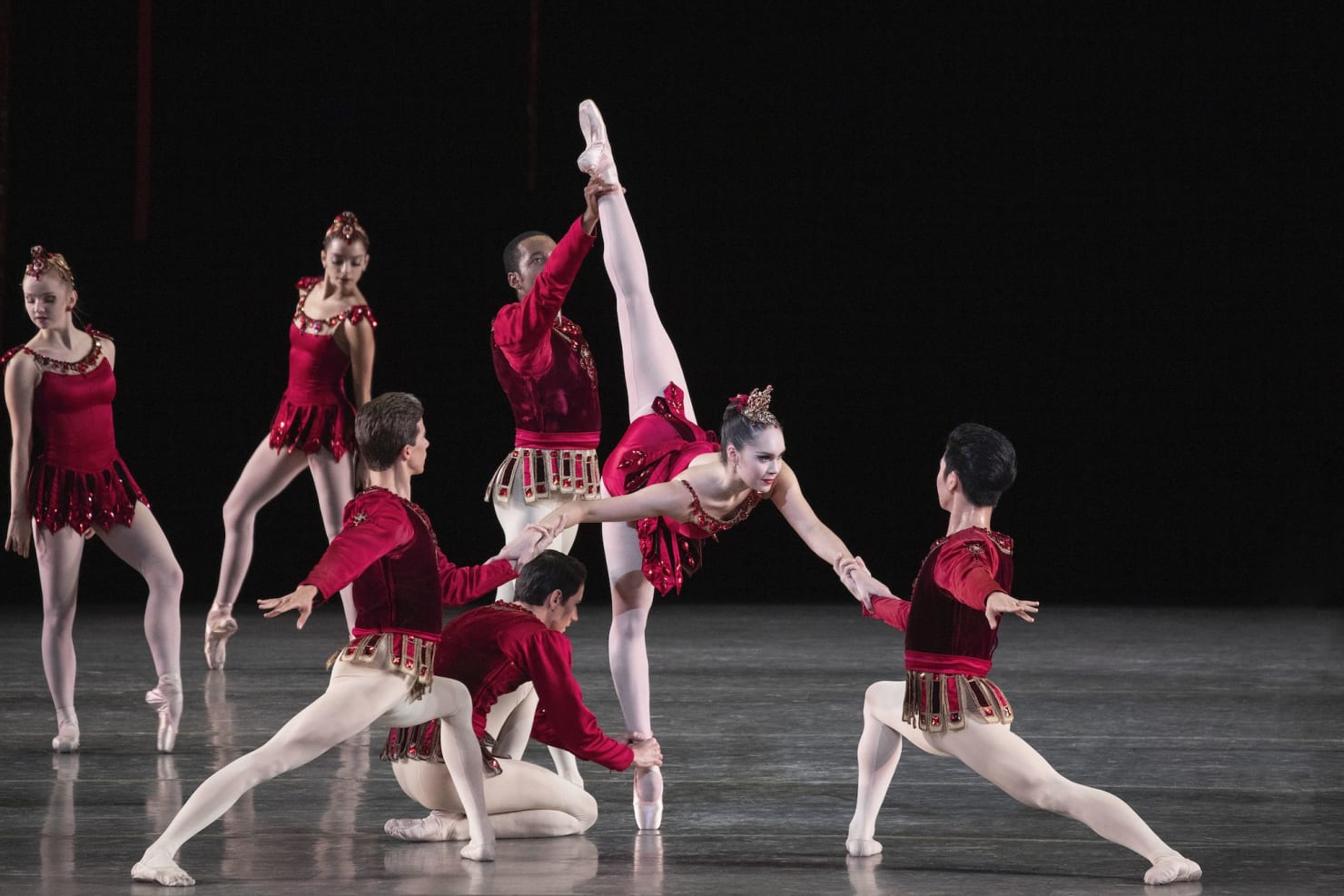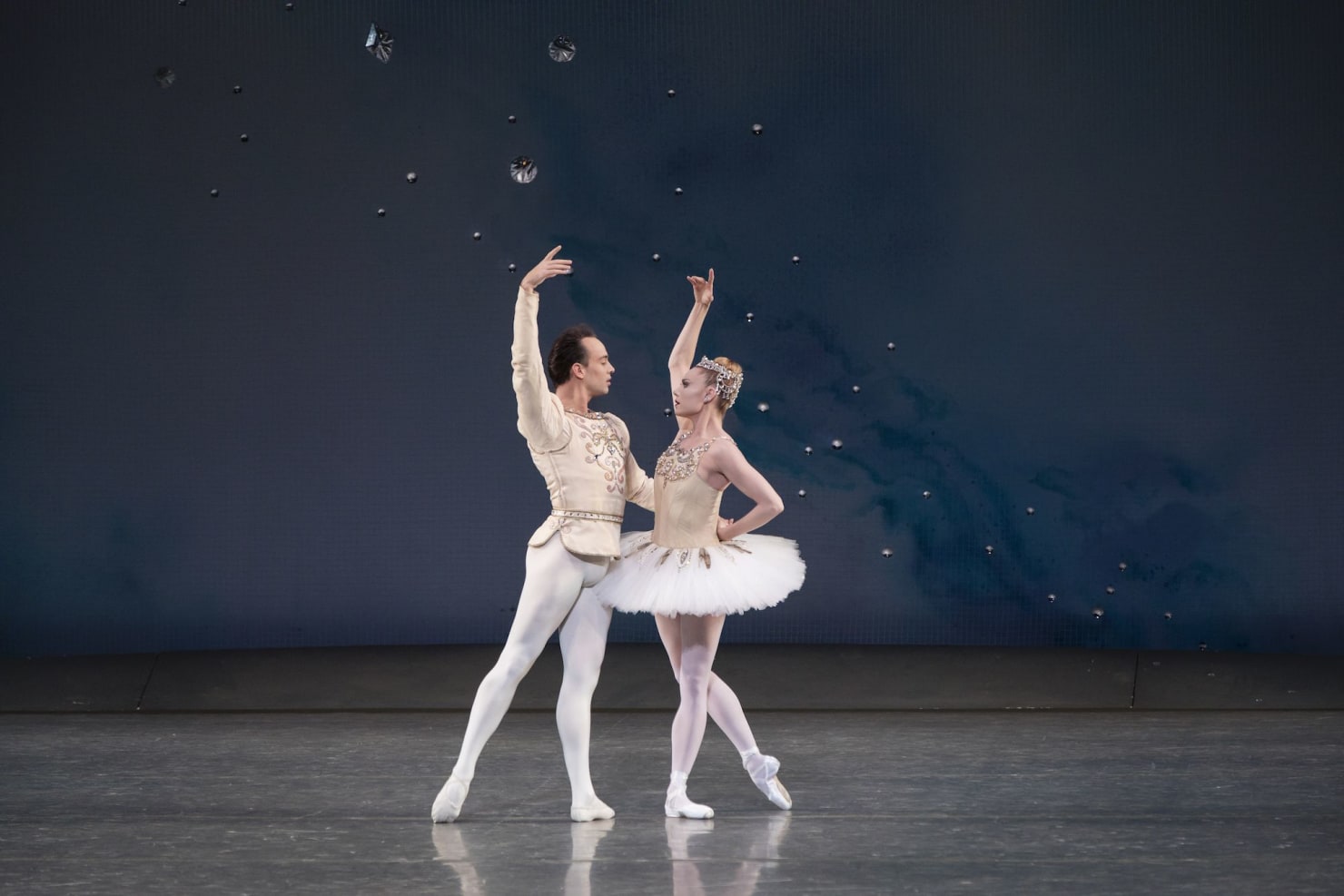
A Sparkling Affair
Jewels: Bringing Gems to Life
September 12, 2019
First meetings don’t always culminate in fruition — it can take time for ideas to marinate.
Such was the case with George Balanchine’s three-section full-length ballet Jewels.
Balanchine’s friend, violinist Nathan Milstein, introduced him to the jeweler Claude Arpels in 1939, but it wasn’t until their second meeting at Van Cleef & Arpels’ Fifth Avenue Salons in 1966 that inspiration struck. Lincoln Kirstein wrote about their meeting, “So impressed was Mr. Balanchine by the beauty of the jewels he saw there, that he decided to try to capture it forever.”
For Balanchine, capturing it began as an idea about color. He’d previously worked with jewel-tones when choreographing the first production of Symphony in C. Performed at the Paris Opera in 1947, Jewels’ predecessor — titled Le Palais de Cristal — featured dancers in colorful costumes designed by surrealist artist Leonor Fini: red, green, blue, and white. With those shades in mind, Balanchine’s second run-in with Arpels seemed ripe to expand upon the idea by marrying it explicitly to jewelry.
“I like the color of gems, the beauty of stones, and it was wonderful to see how our costume workshop, under Karinska’s direction, came so close to the quality of the real stones (which were of course too heavy for the dancers to wear!).”
George Balanchine, NYCB Co-Founder
From color, Balanchine shifted his attention to music, setting each section to a different composer. He paired Fauré to Emeralds, Stravinsky to Rubies, and Tschaikovsky to Diamonds. For a time, Balanchine even considered choreographing a fourth movement to Schoenberg and pairing it with sapphires, but ultimately he decided against it, explaining, “The color of sapphires is hard to get across onstage.”
After the premiere of Jewels, critics and balletomanes alike interpreted the first section as “an evocation of France,” the second as “representative of America,” and the third as a nod to imperial Russia. Balanchine acknowledged those readings, but adhered to the ballet’s plotless nature. “To try to describe for you the dances themselves would be boring, for they have no literary content at all,” he said.
Despite the name, Balanchine insisted, “The ballet has nothing to do with jewels, the dancers are just dressed like jewels.” The jewelry theme may have seemed to start with the costumes, but Balanchine — consciously or not — referenced it in his choreography and staging. In all three sections, the formations represent necklace patterns. Principal Dancer Edward Villella echoed as much when he said, “It’s just like geometry!”
Like pieces of jewelry, each ballet stands on its own, and is sometimes performed outside the context of the full ballet. As Balanchine explained, “The music for the three parts is very different and so are the dances.” Whether performed individually or as a full-length ballet, Jewels is a treasure of the NYCB repertory.






